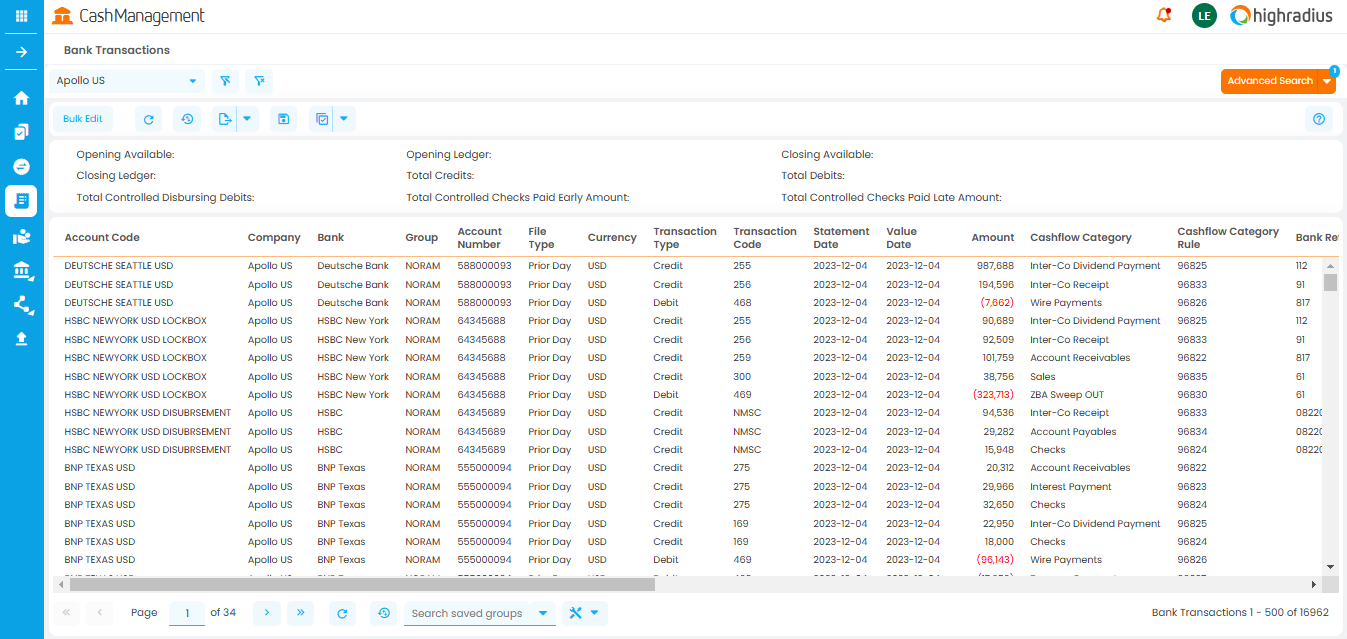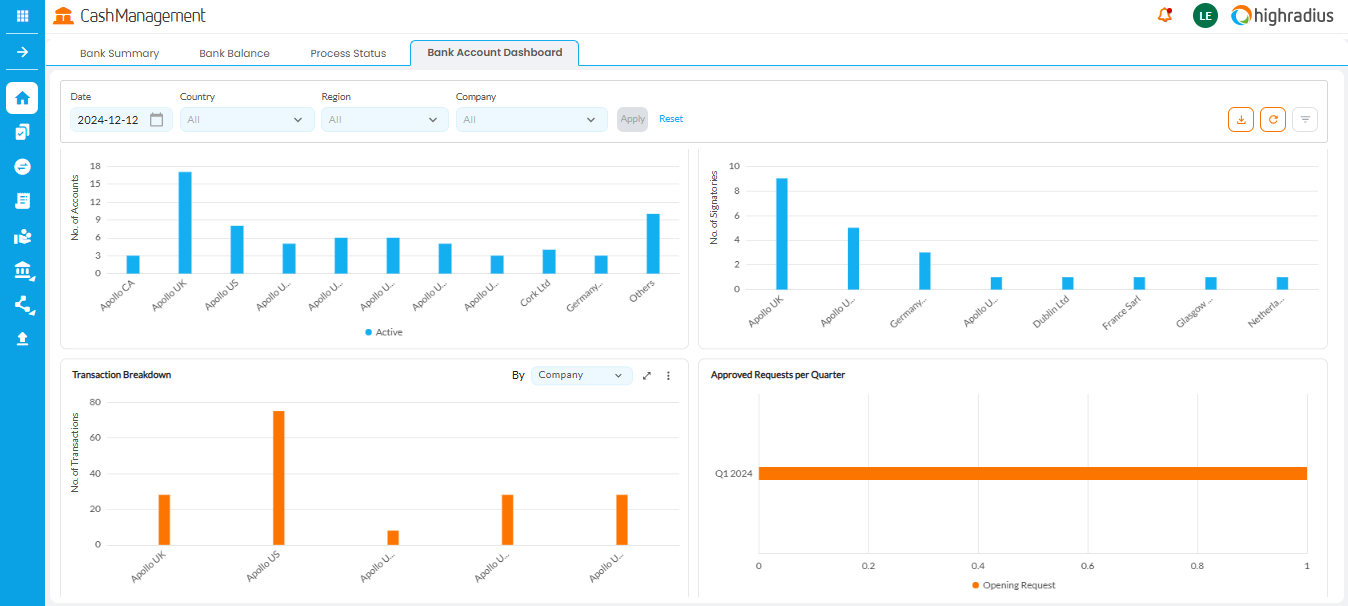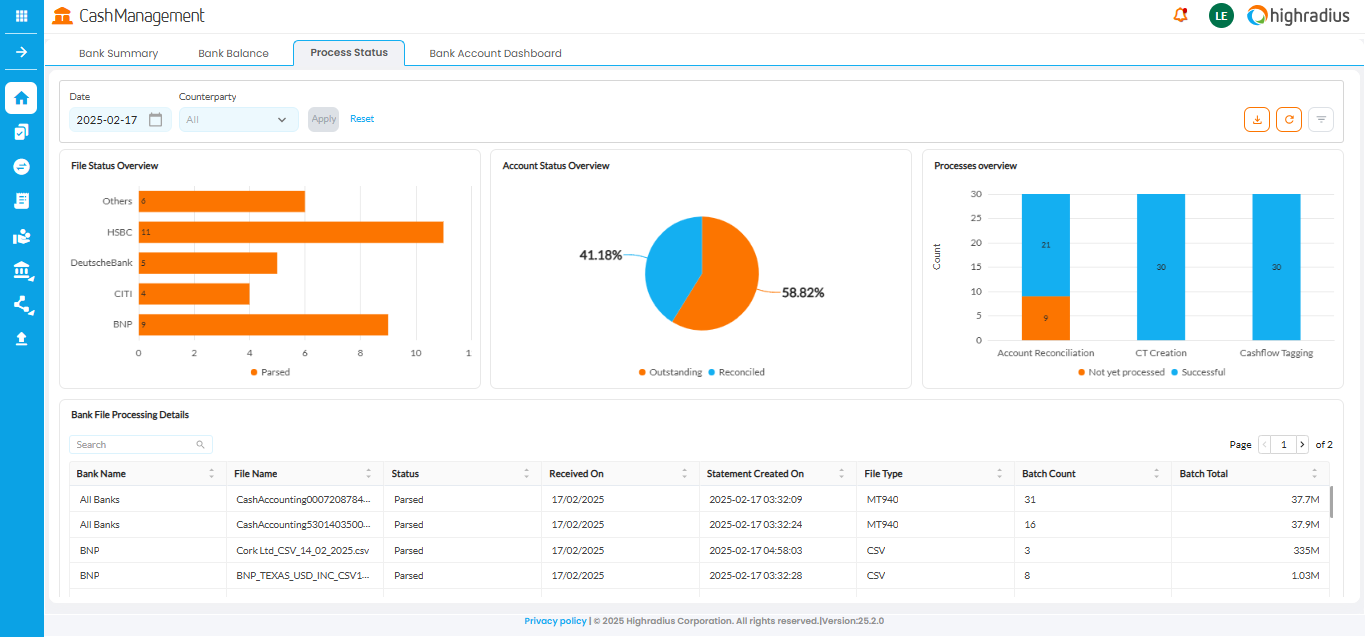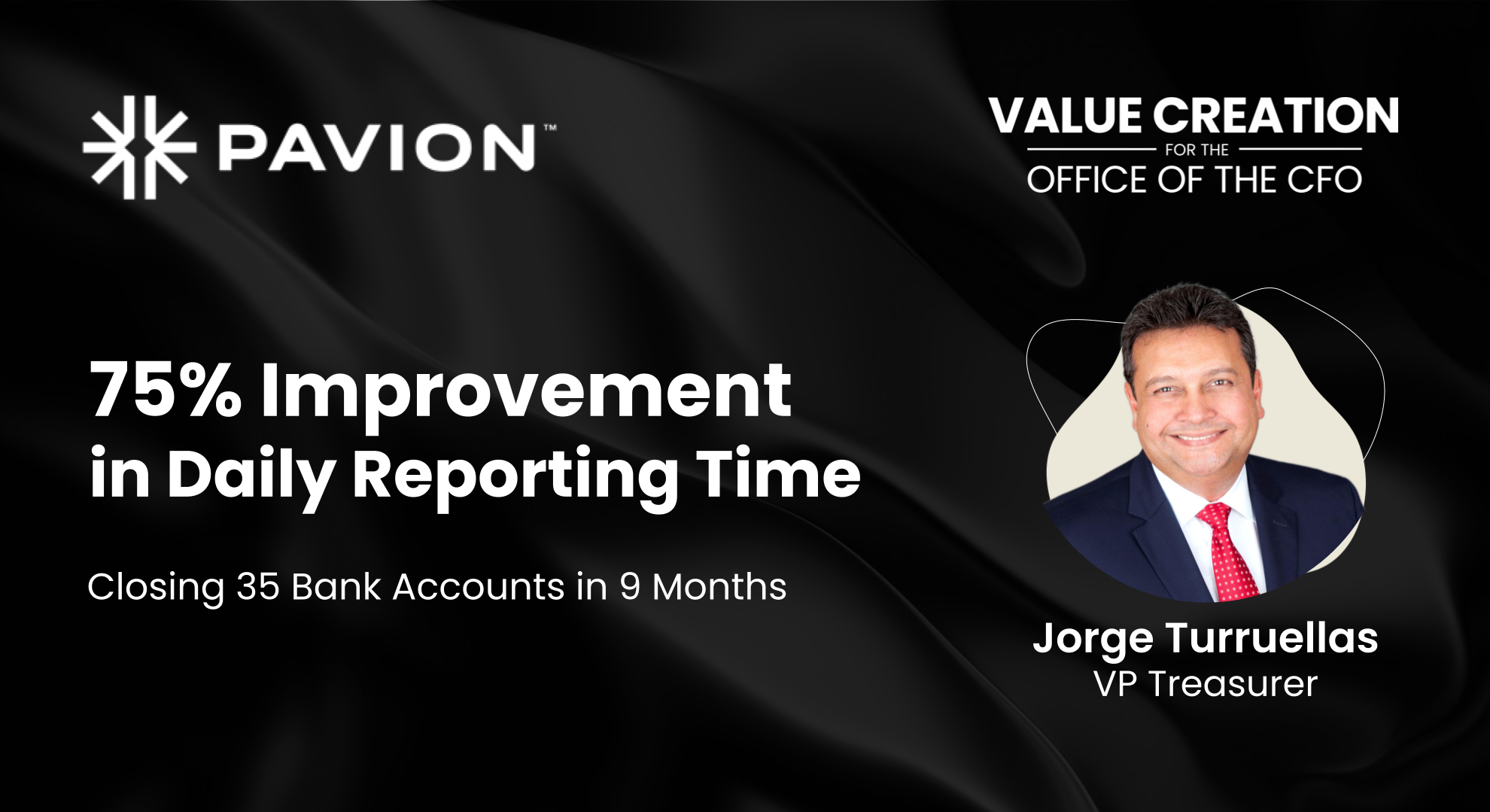Best Automated Treasury Reconciliation Software For 100% Cash Control
Even large finance teams fail to match 1 in 5 payments! Automated treasury reconciliation gives 100% visibility and full cash control.
- Unlock 100% cash visibility across accounts, currencies, and regions to drive smarter treasury decisions.
- Cut idle cash by 50% and put working capital back to work, where it belongs.
- Experience up to 70% boost in treasury productivity by eliminating manual processes.
- Auto-reconcile 98% of planned vs. actual cash transactions with AI-powered precision.
Trusted By 1100+ Finance Teams Globally

Auto reconcile 99% of cash & bank transactions
Just complete the form below
















